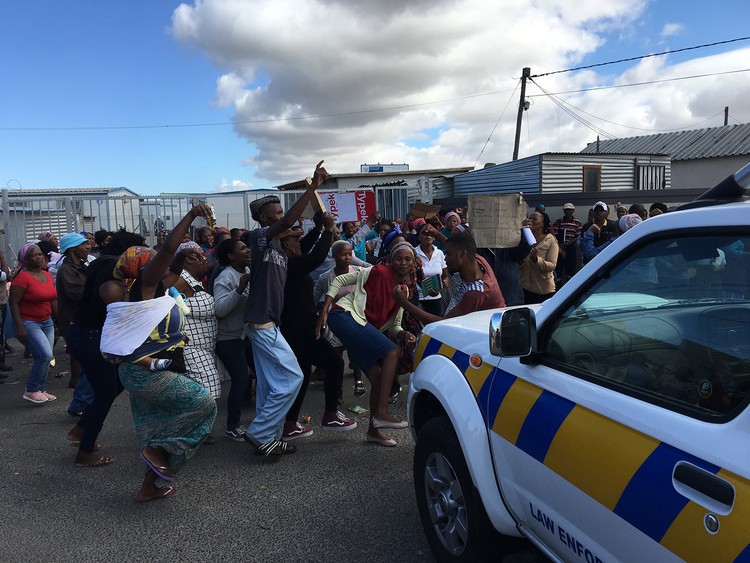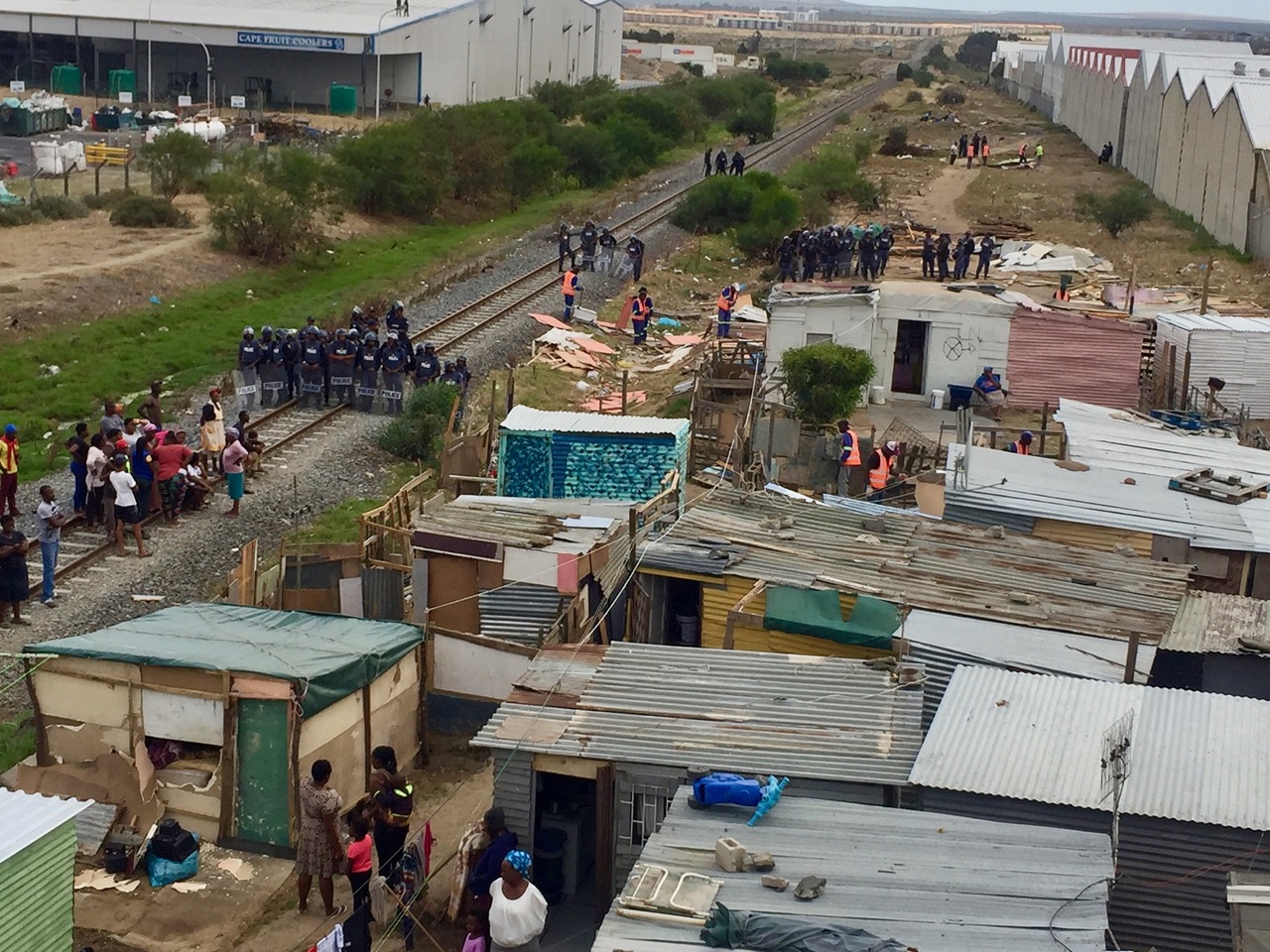Learners want the school reopened
The
School Governing Body of Silver Leaf Primary in Dunoon has shut down the
school. Parents accuse the principal of being rude to them and want him
removed. But some learners want the school reopened.
Deputy chairperson of the School Governing Body Caroline Sikweyiya said parents were accusing Fani of failing to take their opinions seriously on the running of the school, and branding them “illiterates”.
The protest continued on Monday. The parents sang and danced to popular struggle songs and held placards saying, for example, “Fani must fall”.
Yandiswa Bika, who has two children at the school, claimed that the principal swore at parents and when they had issues to report to him he met them at the gate and slammed it against them.
“He calls us flies and says that children must be dropped at the entrance gate and that we are not allowed inside the school premises to see them off,” said Bika.
She said some parents with children who were short of items from the school stationery pack were turned back home on the first day of school. This apparently fuelled the anger for the Friday protest.
“He judges us,” she said.
The Western Cape Education Department has, however, said it has received complaints about financial misconduct by the SGB. It is unclear if this is what led to the conflict, and no details have yet been provided about the alleged misconduct.
Director of Communications at the Western Cape Education Department (WCED), Bronagh Hammond, on Friday described the actions of the protesting parents as “very unfortunate as it has affected the learners directly”.
“The principal has raised a number of concerns regarding the conduct of the SGB on certain matters … The SGB, unfortunately, reacted to the letter by shutting down the school. The Department has offered to meet the SGB on Monday,” said Hammond.
But on Monday Hammond said the parents had declined to come to the WCED offices. “This offer still stands.”
“The WCED has also received complaints regarding the financial misconduct of the SGB and will investigate. The refusal to allow for teaching and learning is not acceptable. Learners should not be the victims of the current dispute between the principal and the SGB,” said Hammond.
On Monday the school reopened for about half an hour. Learners, dressed in uniform and eager to learn, returned to school. They started pushing the gate demanding the security guards let them in. The gate was opened.
Teachers were let in at 9:30 am.
But the SGB and protesting parents vowed to not let the principal access the school.
Fani arrived at the school escorted by the Metro Police but was not allowed in.
The parents then cancelled lessons for the day and learners were seen coming out of the classrooms at 10:05 am.
Anele Pikelelo, 16, a Grade 7 learner at the school, said that his teacher told them to go home and did not explain further.
“We are not happy. We want to learn and get ready for high school,” said Pikelelo.
Some parents who got the news via social networks came to pick up their children. Children whose parents were at work were left in the care of the school caretaker.
The protesting parents also made sure that all the teachers had left the school premises.
The school, which has several hundred learners, was also in the news in 2016 when parents protested about the lack of space in Grade R.
© 2019 GroundUp.
This article is licensed under a Creative Commons Attribution-NoDerivatives 4.0 International License.
You may republish this article, so long as you credit the authors and GroundUp, and do not change the text. Please include a link back to the original article.
This article is licensed under a Creative Commons Attribution-NoDerivatives 4.0 International License.
You may republish this article, so long as you credit the authors and GroundUp, and do not change the text. Please include a link back to the original article.
























